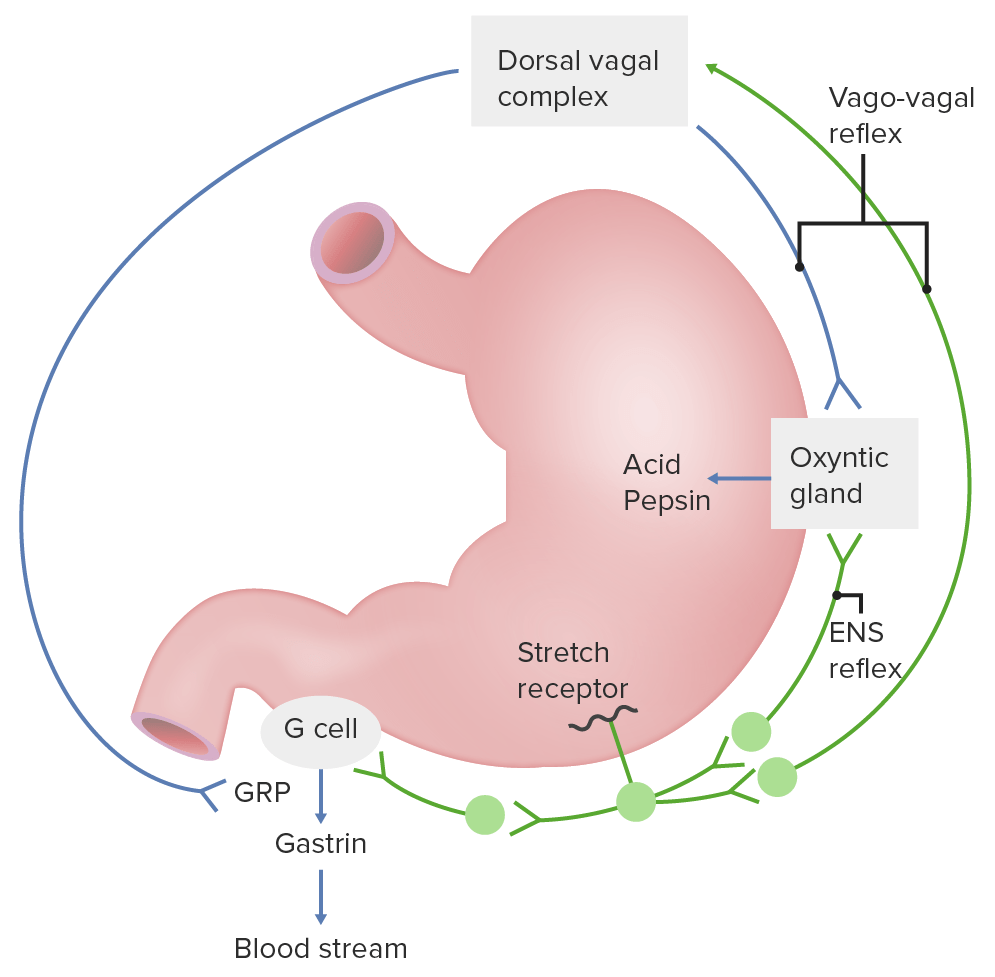Playlist
Show Playlist
Hide Playlist
Neural Signaling Molecules – Gastrointestinal System
-
Slides 01 GastrointestinalFunctionSignalingMolecules GastrointestinalSystem.pdf
-
Download Lecture Overview
00:01 So now, let’s talk through all these different neural signalling molecules. 00:04 And it usually helps to set these up as tables. 00:07 And this is one thing that you’ll want start lining through so you can make sure you understand which neurotransmitter does what particular function. 00:17 The first one is acetylcholine. 00:19 This is released by the parasympathetic nervous system. 00:22 And its primary functions are increasing motility, increasing secretion, and increasing blood flow. 00:29 ATP is released by the sympathetic nervous system, causing decreases in blood flow. 00:35 Calcitonin gene-related peptide is released by afferents. 00:39 So these are not from the sympathetic or parasympathetic nerves, but from sensory nerves that release calcitonin gene-related peptide to increase blood flow. 00:48 The next class are enkephalins and enkephalins are released by the enteric nervous system. 00:55 So this the local control and these help to constrict sphincters. 01:00 And what this does is you constrict a sphincter, you prevent the food stuff from moving from one area of the GI system to the next. 01:08 A great example of this is the pyloric sphincter, which is located in between the stomach and the duodenum of the small of the intestine. 01:16 If you have it constricted, you’ll have less food stuff going from the stomach into the small intestine. 01:23 Finally, we have gastric releasing peptide and why this is so important is it’s released by both the parasympathetic nervous system and the enteric nervous system and this increases gastrin secretion. 01:34 And remember gastrin secretion is important for increasing hydrogen ions. 01:41 The other last set of neural signalling molecules we have are norpinephrine released by the sympathetic nervous system. 01:48 This decreases motility, decreases secretion, and decreases blood flow. 01:55 Neuropeptide Y, also decreases motility. 01:58 Substance P is released by sensory afferents primarily, but sometimes as well by the parasympathetic nervous system. 02:05 And that causes increases in blood flow. 02:10 And finally, we have vasoactive intestinal peptide and that increases both motility and blood flow. 02:18 So these are all the different neural signalling molecules. 02:22 You will want to identify both where they come from and what function they have.
About the Lecture
The lecture Neural Signaling Molecules – Gastrointestinal System by Thad Wilson, PhD is from the course Gastrointestinal Physiology.
Included Quiz Questions
Which of the following is most affected by the action of ATP as a neural signaling molecule?
- Blood vessels
- Smooth muscle
- The salivary glans
- The vagus nerve
- Spinal nerves
Which of the following releases calcitonin gene-related peptide?
- Afferent sensory nerves
- The hypothalamus
- The vagus nerve
- Salivary glands
- Blood vessels
Customer reviews
5,0 of 5 stars
| 5 Stars |
|
5 |
| 4 Stars |
|
0 |
| 3 Stars |
|
0 |
| 2 Stars |
|
0 |
| 1 Star |
|
0 |





